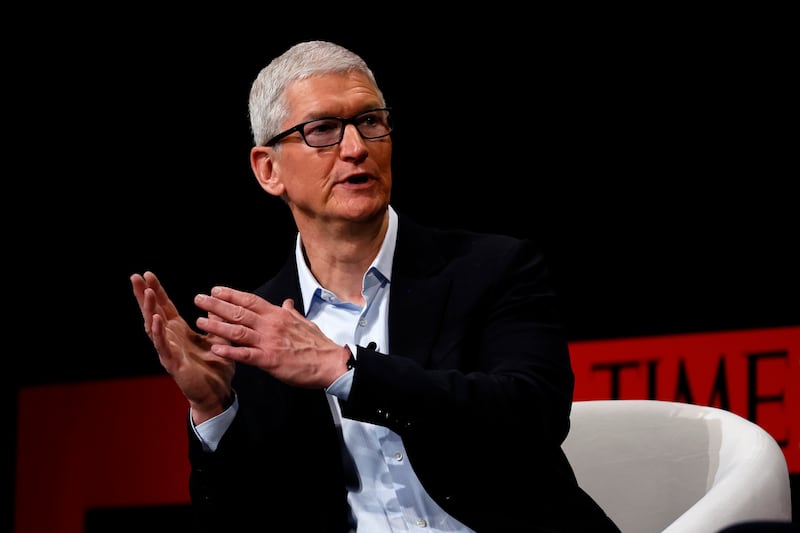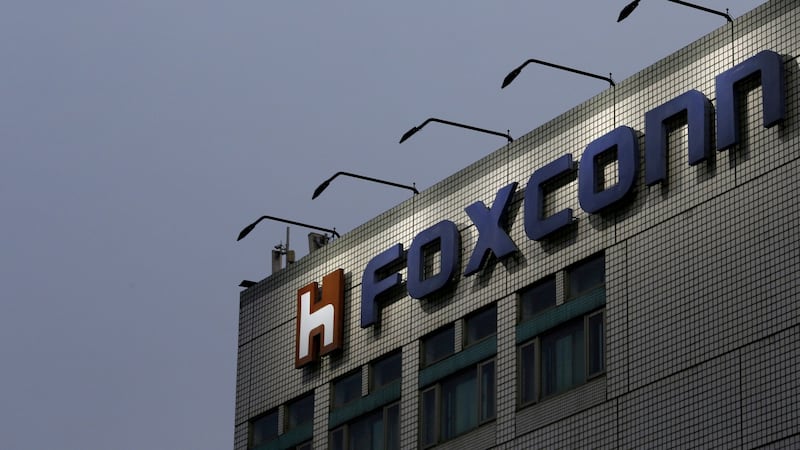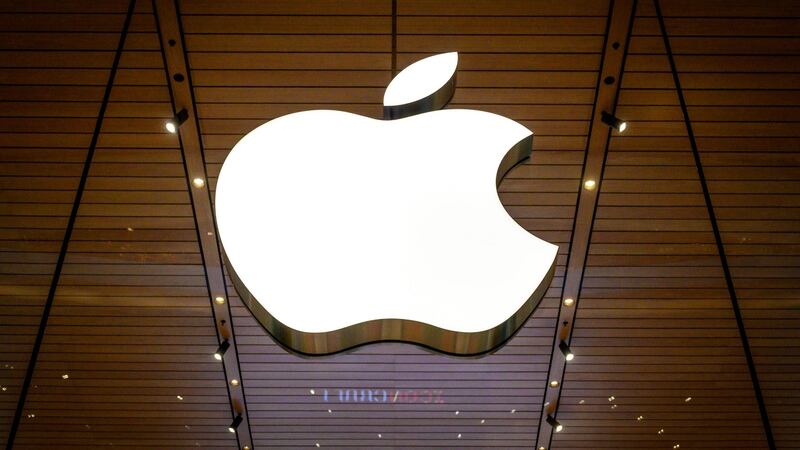In 2007, Nokia had 900 million users. Its market dominance seemed so great that Forbes ran a cover story on the company asking “Can anyone catch the cell phone king?” The same year, Apple launched the iPhone.
Sixteen years and 1.2 billion users later, the story of how the Finnish handset maker got blindsided by the iPhone is well known. Nokia, the story goes, didn’t have enough software savvy to keep up with visionary Apple co-founder Steve Jobs and design whizz Jony I’ve.
But the cellphone’s multitouch, full-screen features were not Apple’s only advantages. The company was also outmanoeuvring Nokia on hardware and production before the iPhone even went on sale. And it did so by making a substantial bet on China and its manufacturing sector.
Supply chain researcher Kevin O’Marah vividly remembers his confusion when, in mid-2007, Apple vaulted from out of nowhere into the No. 2 spot of the Supply Chain Top 25, an annual ranking of the world’s best-run corporate supply chains.
READ MORE
“Everyone was shocked,” he says. “It was like, ‘What? This doesn’t make sense. They have a terrible reputation.’”
The supply chain ranking turned out to be an early indication of a profound shift in operations at Apple, which held the No. 1 spot for the next seven years. In that time it became the world’s most valuable company, while placing itself at the centre of geopolitical tensions.
[ Apple chief Tim Cook to take 40% pay cut this yearOpens in new window ]
O’Marah began to learn that Apple was not really “outsourcing” production to China, as commonly understood. Instead, he realised that Apple was starting to build up a supply and manufacturing operation of such complexity, depth and cost that the company’s fortunes have become tied to China in a way that cannot easily be unwound.
Over the past decade and a half, Apple has been sending its top product designers and manufacturing design engineers to China, embedding them into suppliers’ facilities for months at a time.
The relationship between Apple and Beijing has brought benefits for both
These Apple employees have played integral roles co-designing new production processes, overseeing the minutiae of manufacturing until things were up and running, and keeping close tabs on suppliers to ensure compliance.
Apple has also spent billions of dollars on custom machinery to build its devices, developing niche expertise that its rivals did not even know about, let alone compete with.
It has transformed the company and the country. “All the tech competence China has now is not the product of Chinese tech leadership drawing in Apple,” O’Marah says. “It’s the product of Apple going in there and building the tech competence.”
These operations played such a salient role that the unassuming character behind them, chief operating officer Tim Cook, would succeed Steve Jobs as CEO in 2011. It was Cook who shifted Apple’s production from the US to China, where he established unparalleled efficiencies that underpinned Apple’s ascent.
But this extraordinary success story has also created Apple’s biggest vulnerability: its dependence on a single country, China, which under President Xi Jinping has grown increasingly authoritarian and estranged from the west.
The manufacturing concentration is glaring for a risk-averse company widely lauded for leading the world in supply chain brilliance. More than 95 per cent of iPhones, AirPods, Macs and iPads are made in China, where Apple also earns about a fifth of its revenue – $74 billion (€68 billion) last year. That contrasts sharply with rivals such as Samsung, which have sharply cut back manufacturing in China.

Even in recent years, as competition between Washington and Beijing has escalated sharply, Apple has continued to invest in China and further cement its connections with the country.
The result is intense political scrutiny of Apple and its relationship with China, the country most in Washington consider to be America’s principal rival. Cook and his company are now under intense pressure from investors and US politicians to “decouple” from China and accelerate a diversification strategy that already has some products assembled in Vietnam and India.
When it comes to finding suppliers, Apple follows a rigorous process
Apple declined to comment on this story. But interviews with 25 supply chain experts, including nine former Apple executives and engineers, suggest the iPhone maker has few viable paths out and none in the short term.
And it’s clear to those who know the company well where responsibility lies. “Supply chain all goes back to one guy: Tim Cook,” says a former Apple veteran. “This mess is his fault. This isn’t just ‘the buck stops at the top’, it’s that ‘the buck stops with the guy who headed the supply chain.’ And Tim is the master of supply chain.”
Apple was far from the first computing company to offshore production to China. By the time Cook was lured to run worldwide operations in 1998, the likes of HP and Compaq were well established there.
But Apple took advantage of the opportunities in unique ways. Instead of selecting components off the shelf, it used custom parts, designed the manufacturing behind them, and orchestrated their assembly into enormously complex systems with unprecedented scale and flexibility.
In the supply chain rankings of 2007, P & , Toyota and Walmart all had a peer ranking score at least double that of Apple. But when it came to a supply chain metric called “inventory turns” – a measure of goods sold versus inventories – Apple was in a league of its own.
Cook had once described inventory as “fundamentally evil,” likening electronics to dairy that would spoil in a few days. The results showed this was not a mere aspiration. Apple had 2.5 times better inventory turns than Nokia and was 12 times better than Coca-Cola.

What will a new insurer in the market mean for consumers?
It also invested heavily in the production process to build moats around its manufacturing innovations, while rivals were just giving supplier spec sheets and saying: “build this.”
“[Apple] were doing more capital equipment buying than anybody I could see in the world, and yet they were not owning it themselves – they were putting it in other people’s plants,” O’Marah says.
As iPhone production ramped up, the value of Apple’s “long-lived assets” in China – primarily equipment it uses in the production of devices – soared from $370 million in 2009 to $7.3 billion in 2012.
These “spectacularly significant” investments meant that by 2012, Apple’s machinery in China had become more valuable than all of Apple’s buildings and retail stores put together, according to Horace Dediu, a former Nokia executive who now runs the market intelligence group Asymco.
Such vast sums enabled Apple to come up with production techniques that others could not imagine. In 2008, for instance, it launched a “unibody” MacBook Pro made from a single block rather than multiple parts, a feat of industrial engineering offering “a level of precision that is completely unheard of in this industry,” Jony I've said at the time.
[ Apple brings more components in-house as it eases reliance on Samsung and LGOpens in new window ]
This was accomplished using a CNC machine, which allows a designer with a 3D image file to create complex parts. These machines had been around for decades but, costing upwards of $500,000 each, were only used to build prototypes.
Three former Apple manufacturing engineers say the company purchased more than 10,000 CNC machines, enabling a form of mass production that Steve Jobs called “a whole new way of building notebooks”.
Soon Apple was using the same technique for iPhones and iPads. According to two people involved, Apple made a deal with Fanuc, an automation group, to purchase its entire pipeline of CNC machines for years to come – and then it scoured the globe for more.
Today, China accounts for 70 per cent of all smartphone manufacturing, according to Bloomberg Intelligence, and China sports a level of technical sophistication that multiple experts say they struggle to even comprehend
“There were not enough CNC machines in the world to do the machining that we needed to do,” one person says. “You have to understand that starting in 2009 we were growing exponentially. We’d go from building 10,000 parts a day one year, to 100,000 the next, and then 500,000, and then a million ... Money was no object, basically.”
When it comes to finding suppliers, Apple follows a rigorous process.
According to five people involved with Apple’s tactics in China, it is typical for an Apple engineer from California to meet the CEO of a Chinese parts supplier, then pepper them with questions until their technical ability has been exhausted.
The Apple engineer will then be brought to the next manager, and then the next, where the same thing happens until they have gone deep into the hierarchy, entering some windowless conference room in the basement where the person who actually wrote the line of code necessary to answer Apple’s questions is located.

After hours of interrogation, the Apple engineer will get the company to commit to building a custom part, in massive quantities, effectively taking control of the supplier’s R & roadmap.
One former Apple operations director says the company has consistently applied this approach, going back to “first principles” to understand any hiccups in cost, design, and scaling possibilities.
“There would be constant digging, because if you asked enough questions, then you could figure out what the constraint is – and then you could figure out how to get through it,” this person says. “I never encountered a level of detail that Apple wasn’t interested in.”
This approach comes directly from Cook, says another former Apple executive. The CEO will demand no stone goes unturned even for a rivet costing fractions of a penny per device.
Apple’s production ingenuity has been amplified by a hierarchical government intent on creating jobs, developing expertise and winning the orders of multinational corporations
“If you send him a pitch, he’ll go into page 30, paragraph 7, and ask to talk in more details,” this person says. “It’s amazing how he can go from high-level to the very details, and back.”
These techniques have allowed Apple to push suppliers beyond their perceived capabilities. As Apple grew, its leverage became ever greater: making a component that would be used in hundreds of millions of products was too good to pass up.
Three former Apple veterans say they were floored by how much power they had in negotiations. “It can really make you an asshole,” one says. “People can tell you until they are blue in the face that they can’t do what Apple is demanding, but when two people are both saying ‘no’ to each other, someone is going to cave – and it’s never Apple.”
But a close relationship with Apple could be highly beneficial. The year Taiwanese contract manufacturer Foxconn started assembling candy-coloured iMacs in 2000, it earned $3 billion in revenue – half that of Flextronics, a rival. By 2010, Foxconn revenues were $98 billion, more than its five biggest competitors combined.
Apple’s production ingenuity has been amplified by a hierarchical government intent on creating jobs, developing expertise and winning the orders of multinational corporations.
Provincial governments in China have provided a vast array of preferential policies including important tax-exemptions, as well as apartment complexes to house migrants, warehouses, highways and airports.
In 2009, Beijing orchestrated a staggeringly large fiscal stimulus. State-controlled banks issued $1.4tn of loans, with at least half devoted to infrastructure spending to secure the country’s recovery after the global financial crisis.
This coincided with a breakthrough design for the iPhone 4 and the unveiling of the first iPad, both in 2010.
Foxconn won orders to assemble both products after founder Terry Gou had met with Tim Cook and told him he was underestimating demand, according to Alan Yeung, a former Foxconn official.
“Terry basically said, ‘this is sandbagging – your numbers are way off,” Yeung says.
Gou was so confident that he made a handshake pledge to build two new campuses – one in Zhengzhou, later known as “iPhone City”, and another in Chengdu, known as “iPad City”.
“Gou said, ‘Foxconn is going to underwrite the investment. I’ll build two campuses with Chinese government partners. And when your volume is there, I’m going to build the products for you,” Yeung says.
He was right. Annual iPhone shipments nearly quadrupled to 93 million from 2009 to 2011, while the first iPad shipped 15 million units in its first nine months.
By October 2010, Foxconn’s factories in Shenzhen alone had as many as 500,000 workers churning out products on gruelling schedules. When it emerged that year that more than a dozen employees had died of suicide at the facilities, Apple suffered international blame amid headlines about “iSlavery.”
Nevertheless, there was no shortage of workers applying to Foxconn. The trouble was retaining them, given the monotony of the work.
Ken Moon, who teaches operations at Wharton, says worker turnover at Chinese contract manufacturers can exceed 300 per cent, or what amounts to “replacing an entire factory workforce several times over, inside a year.”
Apple itself estimates that since 2008 it has trained at least 23.6 million workers on their rights – more people than the total population of Taiwan.

Beyond cheap cost, what Foxconn offered – at razor-thin margins below 3 per cent – was labour that was plentiful, close by, and structured to ramp production up whenever needed, but also to taper down, without Apple incurring costs, when it was not.
China also offered labourers with specialised skill sets. Cook, explaining why Apple couldn’t manufacture at scale in the US, once told an audience that if every tool and die maker in America were invited to the auditorium where he was speaking, they “wouldn’t fill the room.” Whereas “in China,” he added, “you would need several cities to fill with tool and die makers.”
The relationship between Apple and Beijing has brought benefits for both.
According to three people that worked with Apple and its rivals, other smartphone makers came under tremendous pressure to keep up, but they lacked a playbook. So they turned to Chinese suppliers for help, giving over intellectual property in exchange for a speedy response.
“They all completely abdicated,” adds Dediu, the head of Asymco and former Nokia executive.
Apple, in other words, set in motion a series of events that helped Chinese suppliers win more orders and advance their understanding of cutting-edge manufacturing. At the same time, western manufacturing of electronics atrophied.
Today, China accounts for 70 per cent of all smartphone manufacturing, according to Bloomberg Intelligence, and China sports a level of technical sophistication that multiple experts say they struggle to even comprehend. “It’s a really, really highly-evolved ecosystem in China,” says Jay Goldberg, founder of tech consultancy D/D Advisors.
China’s dominance can partly be quantified. In 2021, the number of organisations in the country that had been audited to confirm best practices in “quality management systems” – ISO certification 9001 – was 426,716, or roughly 42 per cent of the global total. For India the figure was 36,505; for the US, it was 25,561.
This order of magnitude superiority has reshaped the global economy, granting China influence rivalled only by the US. Apple got in on the ground floor and channelled that power to dominate the tech sector. But now, a reckoning looms.
The fact that Apple has allowed this to go as far as it did, as long as it did, has created this massive problem of disentangling itself
— Jay Goldberg
“For Apple to give that system up is tricky,” says Goldberg. “You’re not just saying ‘we’ll build our plants somewhere else’, it’s [that] the subcontractors and suppliers to that plant are all based in South China.”
If Foxconn, for example, needs to install sonic welders – a process to merge different metals or plastics with ultrasonic energy – it can call up any number of firms to run the line and hire the labour.
“There’s all these subcontracted, specialty niche firms, and nowhere else does that exist, anywhere else in the world,” Goldberg says.
What China offers is not simply labour, he says, but an entire ecosystem of processes, built over many years. Its topography is difficult to describe, but Apple and its Chinese partners have mastered it.
“This all gets lumped into ‘manufacturing’ but there’s a skill there, and Tim Cook personifies it,” he says.
Cook should not be blamed by politicians for enmeshing Apple’s supply chain operations in China two decades ago, says Aaron Friedberg, author of Getting China Wrong. Washington was then encouraging companies to engage with China in the hopes that it would inculcate democratic values.
Where Cook erred, he adds, is by doubling down over the past decade despite mounting evidence that Xi was ramping up repression at home and taking a more combative stance in international affairs.
“The fact that Apple has allowed this to go as far as it did, as long as it did, has created this massive problem of disentangling itself,” Friedberg says. “I have no doubt they just wish all of this would go away, and they could go back to business as usual. Because there is just no obvious way out.” – Copyright The Financial Times Limited 2023















